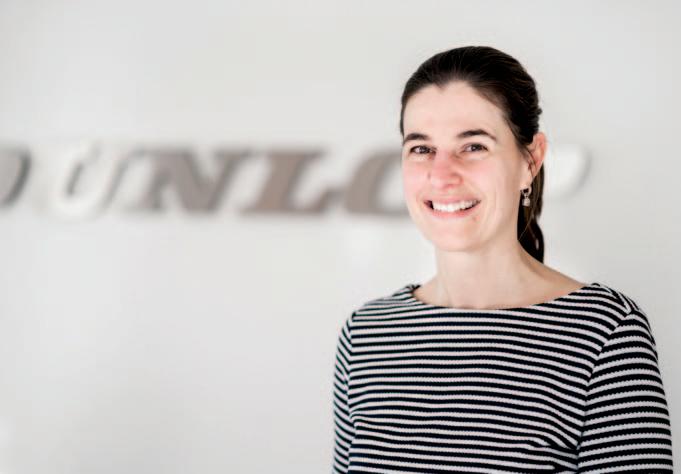
9 minute read
Changing Times
here in Dunlop we really do not see why there should be a fuss. As in everyday life, the role of women in the business world is rapidly changing and expanding. The level of acceptance of women in senior management roles has progressed enormously, especially in Europe. The time is not far away when it will be commonplace. Of course I welcome that, but this is not just about women in senior management. When I walk around our offices and workshops and the factory, I feel enormous pride in seeing women fulfilling a whole range of seriously important roles. Times are changing so much and it is great to see.

BN: What have been the biggest obstacles you and your colleagues have had to face during the past year?
KdH: Like almost all businesses, the aftereffects of Covid-19 have created enormous supply chain issues plus huge increases in the costs of our raw materials. We have to compete for premium quality raw materials on the global market and quality raw materials cost a lot more than lower grade, unregulated raw materials.
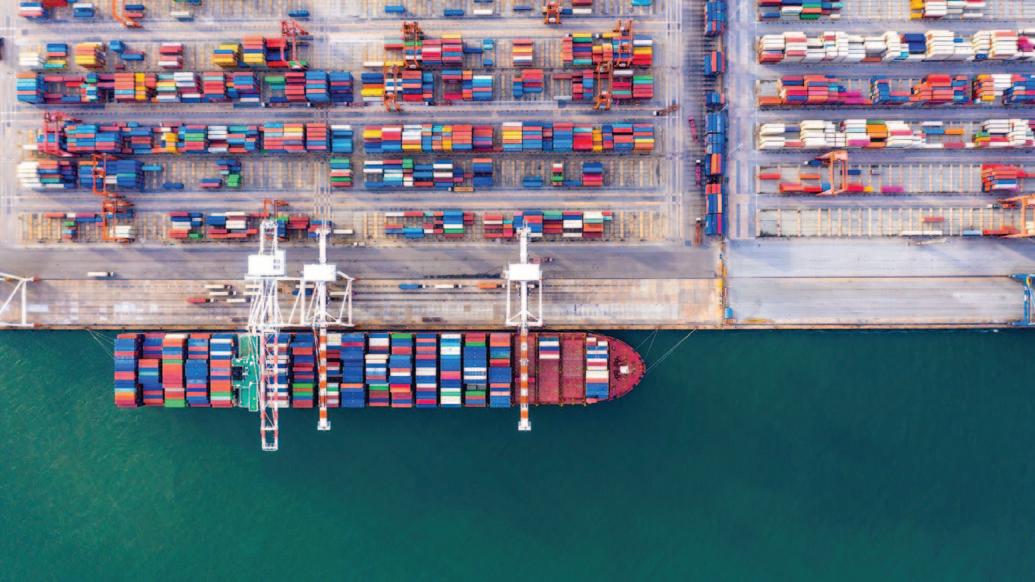
Naturally, we try to get the best prices possible but because the foundation of our market approach is premium quality, we cannot compromise on the quality of those raw materials. That is how it has always been but now, with the Russia–Ukraine conflict, those challenges have become even bigger, especially the astronomical increases in the cost of gas and electricity. Fortunately, we have a great team here plus the backing of our parent, the Michelin Group, so we remain strong.
BN: In the world of conveyor belts, who do you see as your biggest competitors?
KdH: It depends what you mean by ‘competitor’. We do have competition from other European-based manufacturers such as Contitech and Sempertrans, which is fine and healthy. However, the real threat to European manufacturing as a whole is from South East Asia, primarily China. They are the biggest source of rubber belting imported into Europe. As with the approach they use for virtually every other market, they base their strategy on mass volume manufacturing at barely acceptable, and often unacceptable, standards of quality at subsidized prices. Much of the European-based conveyor belt manufacturing capacity has disappeared as a result, particularly over the past two decades. Some of the remaining European competitors now supplement their production with imported belting but we would never go down that road because it would be the beginning of the end.
BN: China is widely described as being ‘the factory of the world’, so how can you compete with them?
KdH: That is an interesting question because the answer is in two, interconnected parts. The first part of the answer is that we have a market strategy of only selling premier quality belts that are exclusively manufactured in our own facilities. This means that we have total control of the quality and safety of the finished product and all of the raw materials that go into that finished product. This has been a principal of our business for over 100 years. The ‘unique selling proposition’ that we use is ‘lowest lifetime cost’. Our belts are so superior to lowgrade imported belt that they can quite easily last for up to four or five times longer, so although the Chinese belts can have a significantly lower retail price, our belts actually cost a lot less in real terms. The hard part is persuading customers to compare the cost rather than the price.

BN: What is the second part of the answer?
KdH: The environment. As a company and as individuals, we have a duty of care. It is widely accepted that urgent action must be taken. If we do not contain global warming by 2030 then the consequences will be catastrophic and irreversible.
The Impact On Our Environment
KdH: There are many aspects of environmental concern. First of all, China are the world’s biggest source (32%) of carbon emissions. In 2020 for example, they emitted over 10 billion metric tonnes of CO2 into the atmosphere. That is more than twice as much as the USA, who are the world’s second highest CO2 producer. Yet another factor concerning carbon footprint is that imported belt typically has to be transported some 30 times the distance compared to European manufactured belt. I discovered recently that more than 100 kilos of CO2 is emitted into the atmosphere for every ton of imported conveyor belt. As you would expect, we use this information to try to persuade industry that they should not be using belts that are imported from Asia. Aside from these ethical considerations and ‘lowest lifetime cost’, our belts have many other advantages, all of which are connected directly or indirectly to environment issues.
Manufacturing industrial conveyor belts produces a big carbon footprint so the impact on the environment caused by discarded industrial rubber belting is huge. Because the working lifetime of good quality belts is so much longer, the amount of belting that needs to be manufactured simply to replace worn-out belting could be reduced by up to 50%. That kind of reduction would represent some 75,000 tonnes of conveyor belting that would not need to be made and transported thousands of kilometers each year. It would also mean that 75,000 tonnes of rubber, polyester, nylon and all the associated chemicals would not have to be disposed of, most of which goes to landfill.

BN: Earlier, you mentioned a threat to human and wildlife safety. What did you mean by that?
KdH: Manufacturers in Asia are not subject to the strict environmental regulations that are applied in Europe such as REACH regulation, which controls the use of potentially hazardous chemicals that pose hazards to human health and the environment. This includes those that may have category 2 carcinogenic classifications. The same applies to EU regulation concerning the use of Persistent Organic Pollutants (POPs). This means that Asian manufacturers are free to use unregulated, unsafe raw materials. They also have an added incentive because unregulated raw materials cost much less than their regulated counterparts.
REACH regulations call for the progressive substitution of “substances of very high concern”(SVHCs) when suitable alternatives have been identified.We believe this is a really positive and progressive thing because these dangerous substances not only affect the people making the conveyor belts but also those who install them and those who are in contact with them in their day-to-day work.
Asian manufacturers are not subject to EU regulations concerning the use of dangerous chemicals and pollutants.
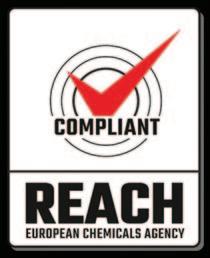
Accountability And Responsibility
We are very proud of the fact that Dunlop Conveyor Belting were the first major conveyor belt manufacturer to achieve REACH compliance.

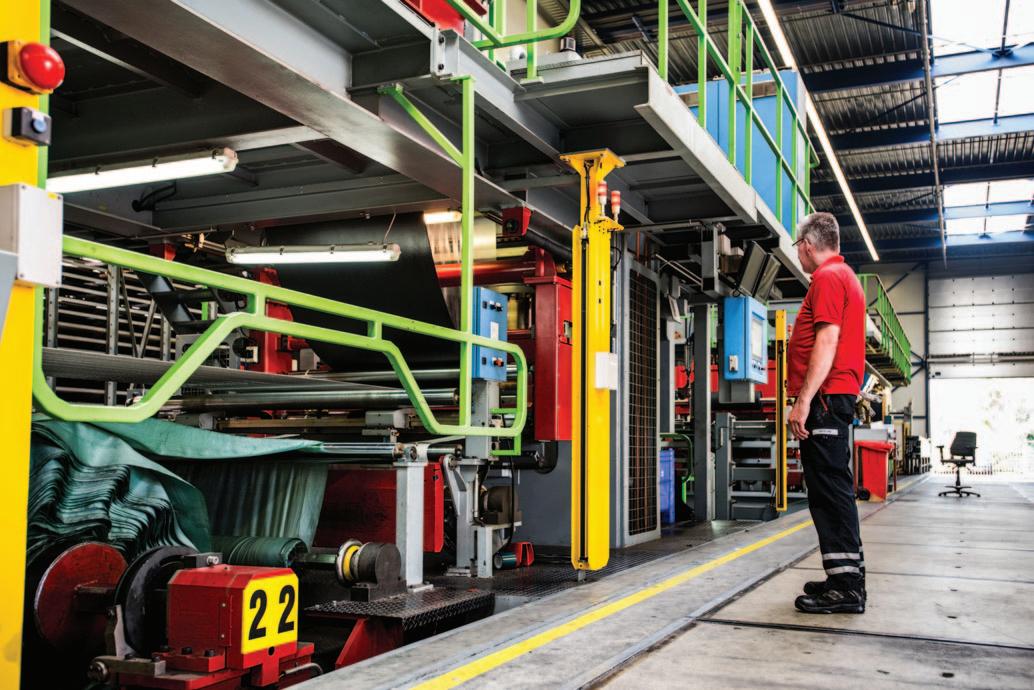
Sadly, many of our European competitors have chosen to ignore the regulations, either completely or at least partially because of the impact on production costs.
What worries me most of all is that because the majority of belt used in Europe nowadays is imported, it is virtually impossible to know how much SVHC and Persistent Organic Pollutants are entering our environment.
BN: You are clearly passionate about environmental impact but at the same time, as chief operating officer, you and your fellow directors also have a responsibility for profitable growth. Do you honestly believe that the two responsibilities are compatible?
KdH: Yes, I sincerely believe that the two responsibilities go hand in hand. Several years before I even joined the company, the Dunlop management team made a conscious decision to pursue environ-
Rugged Energy & Data Transmission Systems
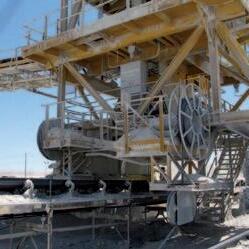
Conductix-Wampfler has one critical mission: To keep your bulk material handling operations running 24 / 7 / 365. You need proven, worryfree energy solutions - and Conductix-Wampfler has them. Our systems provide reliable electric power and water to stacker/reclaimers, barge and ship loaders/unloaders, bulk conveyors, tripper systems, and gantry cranes. Conductix-Wampfler systems are rugged, low maintenance, and timetested in tough, dusty environments. All products are backed by the largest sales and service network worldwide!
www.conductix.com mentally friendly strategies and achieve sustainable growth. As you would expect, it is essential that the growth is also profitable otherwise we would not survive. The strategy is to focus on three key areas; product life cycle, the environmental impact of our products and our production processes. As I touched on earlier, manufacturing industrial conveyor belts produces a big carbon footprint. However, on the positive side, this also means that the actions we take as a company can make a very big difference.
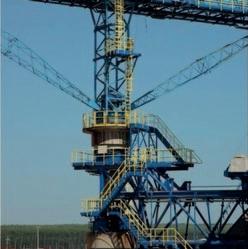
BN: Can you give me some examples of actual Dunlop solutions in these three areas?
KdH: Well, I must keep coming back to how longer product life cycles mean lowest lifetime cost and how this is hugely beneficial both to the end-user and to the environment. The single most practical and effective solution is for conveyor belts to be engineered so that they can be used for at least twice as long as the low-price ‘throwaway’ belts being imported into Europe from South East Asia. We know from experience that when end-users discover how good quality belts cost much less in the long run and help increase productivity, they come back again and again. For us, it is the best way to achieve sustainable sales growth.
The second key area of focus are the chemicals and ingredients used to create rubber and the lasting environmental impact that they can potentially have on the environment, which I spoke about a few minutes ago. The real problem is a lack of awareness amongst end-users about the damage they are doing to the environment simply by buying unregulated imported belt. As a company, we do all we can to provide guidance and education on the subject but it is a constant battle to win hearts and minds. I am pleased to say that my colleagues in sales and marketing are telling me that attitudes are starting to change and that a growing number of customers are becoming more environmentally aware, so that fills me with hope.

The Production Process
KdH: The actual production process has not changed fundamentally for a great many years and much of the machinery is often old and not as energy efficient as it might be.
BN: So what has your company been doing to improve energy efficiency?
KdH: Especially during the past ten years or so, we have invested many millions of euros replacing outdated machines and building new, technically advanced production lines. This not only reduces our carbon footprint it also improves the overall efficiency of our business and uses less energy so the truth of the matter is that we win both ways. The fact is that energy saving forms a part of every project plan regarding process efficiency or capex projects. This also includes the constant development work that our engineers are carrying out in the search for new and improved products. The best example of this has been the development of a new type of belt construction that possesses a huge number of technical and environmental advantages. The most common type of belt has an inner carcass consisting of multiple layers of polyester and nylon fabric with a thick rubber outer coating. What our engineers have done is create a single-ply carcass using an amazingly tough patented fabric that is exclusively made in our sister company’s in-house fabric weaving facility in the USA. The result was Dunlop Ultra X, which is a unique single-ply, super-strength belt that has far greater resistance to ripping, tearing and impact compared to traditional three-ply or even four-ply belting. This increased durability means that Ultra X provides a much longer working lifetime. Very importantly, it is also on average 10% lighter than its multi-ply counterpart so it uses less energy during operation.
BN: But how does this new type of belt contribute to your sustainable growth ambitions?
KdH: Quite simply, having a single-ply construction helps to maximize production efficiency because there are fewer production runs. Another advantage is that not having a rubber skim between the plies results in a thinner, stronger carcass while also reducing the amount of rubber needed. Yet another advantage is that we can make longer production runs at maximum width, which further improves efficiency and, very importantly, minimizes the amount of energy consumed. Sales of Ultra X on both sides of the Atlantic are going very well and we are increasing the range. Having a unique product like this that is also environmentally friendly is already contributing to our sustainable growth ambitions and also the ambitions of our customers.
BN: Thank you Kerstin. Do you have any final comments or messages?
KdH: First of all, thank you for this opportunity. As I hope you can tell, I am passionate about what we are doing here in Dunlop. These really are changing times. I am not alone in this because all of my colleagues in Dunlop’s leadership team and throughout the company share that passion. Every individual and every company has a responsibility to do whatever possible to prevent even more damage being done to our planet. I sincerely hope that enough manufacturers, traders and end-users will wake up and smell the coffee and make a concerted effort to substantially reduce this unhealthy and dangerous reliance on cheap imported belt. The future is in our hands.










